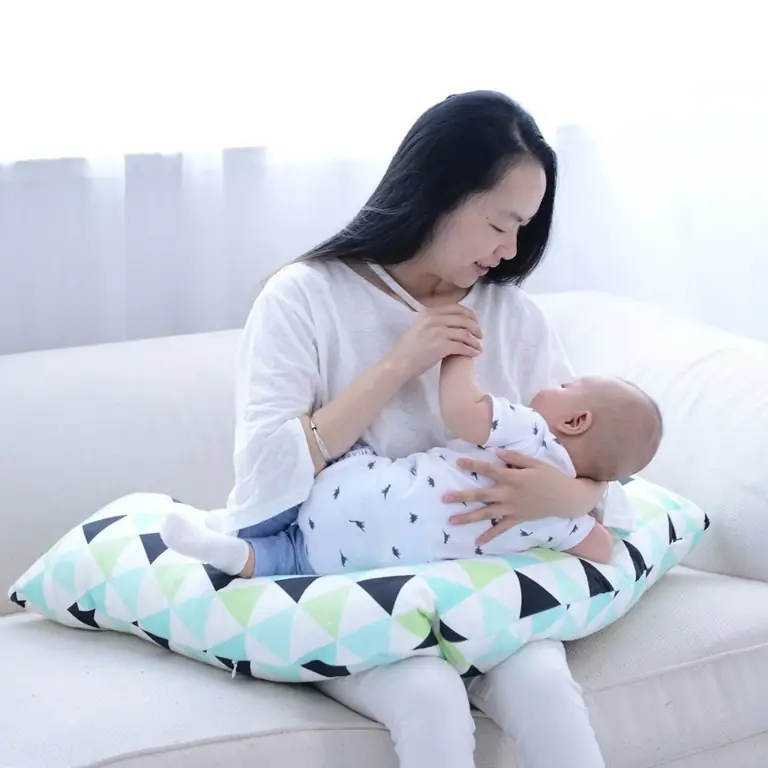2026 Author: Priscilla Miln | [email protected]. Last modified: 2025-01-22 17:55:15
As you know, most children have imaginative thinking. That is why the educational and educational process at a young age is more successful if the teacher uses various demonstration materials in his work. What is it, and why is it so important to use a variety of forms of visibility?

What is a visual aid for preschoolers
Demonstration materials are special images of objects and phenomena, specially created to facilitate perception. They contribute to the formation of correct ideas and concepts in children, favor the development of strong conscious skills and abilities. Demonstration materials are actively used by teachers at various stages of the educational process. With their help, children learn new material better, as well as consolidate and repeat what they have learned.
Kindergarten demonstration material could be:
- training pictures;
- small handoutscards;
- filmstrips;
- slides;
- toys;
- natural material: leaves, cones, acorns and so on;
- other species.
The large-sized manuals made in bright cheerful colors are of particular value. Such materials arouse keen interest and are better remembered.

The Importance of Visual Materials for Toddlers
No wonder they say that it is better to see once than hear a hundred times. The use of demonstration material helps the teacher instantly depict things and objects that are difficult to express in words that are understandable to a small child. The use of visual aids in the study of the material not only saves the teacher's time, but also generates a keen interest in the child, brings variety to the boring educational process. Since visual memory is longer than auditory memory, a picture will remain in a child's head much longer than a verbal description.
Types of demonstration aids
Different types of manuals can be used as demonstration material for studying the same subject.
Tables. This refers to alphabetic or numeric entries placed in a certain sequence. Most often, information is grouped in columns or is a series of figures. It is possible to use accompanying text, but it is not required. Usually tables are placed on large sheets of paper that can be attached to a thick fabric,plastic or cardboard. Depending on the type of information, tables can be:
- reference;
- training;
- instructive;
- educational.
Fine materials. This includes posters, paintings, applications, sets of cards depicting various objects or natural phenomena. Here you can also include demonstration materials in the form of models of instruments for measuring and tools:
- models of various items and goods;
- scales;
- dial;
- models of various measures (liter, meter and others);
- models of geometric shapes.

Objects of the surrounding world, natural materials. Such materials can be fruits, vegetables, sticks, cones, pencils, books, toys, flowers, leaves and much more. Most often, this type of didactic aid is used in the study of mathematics and the basics of counting. Some objects are also used to demonstrate the basics of geometry. For example, a bagel is a circle, a ball is a ball, and a nightstand is a cube.
Using it right
Knowing the types of demonstration material contributes to their correct selection and use, which is very important for improving the effectiveness of training. Of course, the modern printing industry makes it easy to acquire all the necessary educational materials. But didactic materials made by the hands of the children themselves work much better and more efficiently. Therefore, it is necessary to actively involve kids in thiscreative work. This contributes to the development of certain skills, the development of imagination and fine motor skills, the acquisition of additional knowledge and skills. Further work with self-made demonstration material encourages the child to respect the work of others.

But, as you know, everything is good in moderation. It is very important to observe the rule of sufficient and necessary use of material. If you use demonstration material where it is completely inappropriate, you can not only not teach children to think correctly, but even take them away from the task at hand. A vivid example of a negative impact can be this: a child learns to choose the correct arithmetic operation when solving a task. If an illustration is used to achieve the goal, in which another one runs to two bunnies sitting in a clearing, the child will find the correct answer by simple recalculation. At the same time, he will not at all begin to think about what kind of action needs to be applied. The task will not be achieved. Moreover, in this case, the use of demonstration material, on the contrary, will slow down the formation of the skill of determining the correct action on the proposed numbers.
Recommended:
How to get rid of the smell of a dog: frequent bathing, the use of special shampoos, folk methods and the use of special products

How to get rid of the smell of a dog in the apartment? Many people think that it is better not to have animals in the house at all or to get rid of them as soon as they smell bad! The smell from a dog is the norm, animals smell especially strongly when wet and after a walk. But this smell should not prevent people from pleasantly existing in their own housing, it should be barely perceptible, and not envelop the entire apartment. How to get rid of the smell of a dog, we will tell in this article
Nursing pads: how to use, instructions for use

What are nursing pads for? Their advantages and disadvantages. Types of pads for feeding and various manufacturers. The right choice of breast pads and instructions for use. Proper care and prices for products. Ways to wean a child off breast pads
Reusable chemical heating pad: how to use? S alt heating pad: instructions for use

Autonomous s alt heaters are used for first aid, treatment of colds and purulent diseases, injuries and in many other cases. Knowing the instructions for use, using a heating pad, you can make a warming and cooling compress
Decoration for an aquarium: the use of natural materials and the rules for their preparation

Aquarists devote a lot of time to the appearance of their aquarium, creating unique designs for it from the most unusual materials. Making decor with your own hands is not difficult and does not require large cash costs, but this approach will provide enough pleasure and aesthetics
"Albucid" for a child: instructions for use, features of use, reviews

Inflammatory diseases of the eyes due to the immaturity of their own immunity in children appear quite often. At the same time, the first symptoms in newborns and babies who cannot speak are very easy to miss, because they cannot tell about unpleasant sensations. In any case, Albucid often helps in the fight against such pathologies. Doctors prescribe the drug to a child because of its relative safety, ease of use, and most importantly, effectiveness

